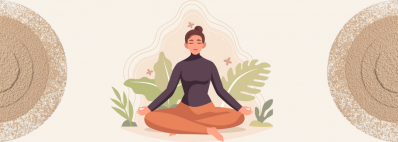Promotional Features
KSM-66 leads ashwagandha to popularity: but are new entrants' claims truly compelling or mostly marketing hype?
Ashwagandha, a herb deeply rooted in traditional Ayurveda, has witnessed a remarkable surge globally in recent years.
This meteoric rise in popularity isn't merely a result of global trends gravitating toward holistic health; it is significantly attributed to the groundwork by industry frontrunner, KSM-66 Ashwagandha.
But what positions KSM-66 at the forefront of ashwagandha's global surge? The answer may lie in their dedicated approach to research and marketing. At the vanguard of scientific inquiry, KSM-66 distinguishes itself with a fervent commitment to unravel the true potential of ashwagandha. Their devotion is evident in their relentless pursuit of evaluating and clinically proving the safety and efficacy of their product. In fact, KSM-66 Ashwagandha stands out with the highest number of rigorous clinical studies, attesting to its unparalleled quality and benefits.
The KSM-66 team’s achievements are not solely bound to the labs and research facilities. KSM-66 recognizes the power of communication and education in today's digital age. Their extensive marketing strategies encompass a plethora of platforms and mediums. By building partnerships with international media conglomerates, KSM-66 ensures that the virtues of ashwagandha reach every nook and cranny of the world. From informative blogs, insightful articles, and engaging infographics to white papers, videos, and podcasts, their content resonates with both the curious novice and the well-versed enthusiast.
This holistic approach to both research and marketing has essentially allowed KSM-66 to carve out a unique category, with them at its pinnacle. Their efforts have not only propagated the benefits of ashwagandha but have created an unmistakable buzz around it.
The rise of ashwagandha's popularity has led many companies to venture into producing ashwagandha extracts. These extracts can deviate significantly from time-tested traditional formulations. The underlying reason? A mounting pressure on these fledgling suppliers to boost sales by highlighting supposed ‘advantages’. These proclaimed benefits are sometimes marketing embellishments that dilute the genuine essence of what the industry aims to provide to its consumers. Below are some common claims which need careful examination on whether they are indeed valid:
- Low dosage: Many companies, under the guise of innovation, are introducing low-dosage extracts with an elevated withanolide content. While withanolides are indeed one of the crucial bioactive components found in the root, it is vital to recognize that they are just one component of a whole slate of bioactives in ashwagandha. Inflating the percentage of withanolides to artificially high levels in the extract can fundamentally disrupt the natural ratio of beneficial compounds present in the herb. Moreover such distortion of the natural balance by inflating one component like the withanolides may detract from the holistic healing properties that make ashwagandha truly special.
- Adulteration with leaves: Because leaves are cheaper and more easily available than the roots, many manufacturers add leaves to their ashwagandha extracts. It is important to recognize that leaf withanolides differ from root withanolides. This can lead to an end-product inconsistent with the traditionally consumed ashwagandha root. Perhaps for some of these many concerns, the Government of India recently released an Advisory advocating for the utilization of ashwagandha roots alone and advising manufacturers to refrain from using ashwagandha leaves.
- Claims of improved bioavailability: The principle of bioavailability, while relevant in specific contexts, is considered by many to be a misfit when applied to herbs. Consequently, undertaking studies to compare new extracts against established formulations like KSM-66, which possesses a distinct profile, can be misleading and non-indicative of effectiveness in the long run.
- Claims of sustained release formulations: Advancements like liposomal technology, although groundbreaking in some fields, are seen by many experts are incongruent in the domain of herbs and holistic wellness. Again, the use of these technologies may not result in improvements to what really matters, which is the long run safety and efficacy of a herb extract.
Such claims may often serve to distract from the fundamental drivers of value to end consumers, which is a product with a long history that is known to be safe, efficacious, clinically tested and trusted. KSM-66 Ashwagandha is one ingredient that can serve these basic value drivers sought by end consumers.
It has dedicated 14 years to developing its extract. It is to be expected that a growing category like ashwagandha will bring in new entrants that seek to capitalize on the increasing demand for consumers. It is to be expected also that the new entrants will make new claims to distinguish from the market leaders. Brand managers and product managers would be well-advised to be cautious with a healthy skepticism when evaluating the claims of ingredient suppliers.
If these claims are in fact mostly marketing hype, not serving the basic value drivers sought by end-consumers, they may jeopardize consumer trust in not just individual brands, but in ashwagandha itself. It is imperative, therefore, that brand managers and product managers approach the claimed innovations of new market entrants with discernments and caution.







